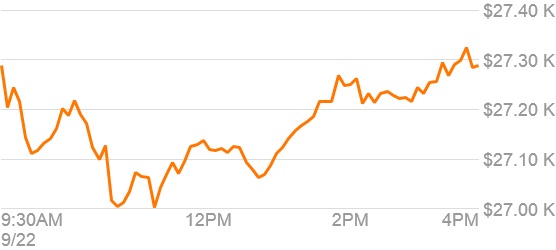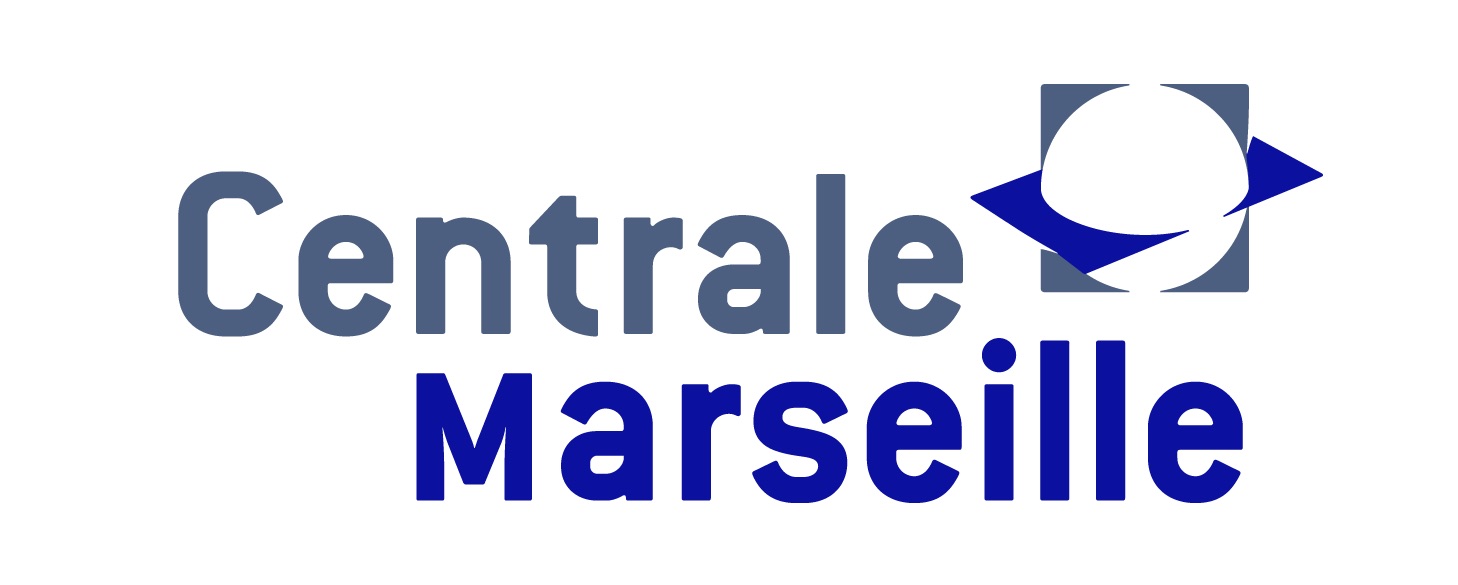Chapter 3-supply and demand, the price of risk

Introduction
In this chapter we want to focus on risk exchange.Suppose we have individuals which are exposed to some risk. For instance they initially own a certain amount of some assets, some of them being risky and other sure. The question is : how can they exchange risk in order to improve their welfare? For instance if I have sold a good on the international market in dollars and I will be payed in two months, I initially own a particular asset : dollars in two months.This asset is risky, because, today, the value of a dollar in two months (from today's point of view) is a random variable. I would like to mitigate that risk in selling for instance a forward dollar. The first qustion is : what is the demand of assets of a given investor.That is what is called the simple portfolio problem. Then we will study market equilibrium.
The simple portfolio problem
In this section we want to focus on the demand of a risky asset.
The key feature is that individuals accept to take risk only if there is some return on the mean. We call "equity premium" the difference between the risk-free rate and the expected return of a risky asset. People accept to invest if this bonus is positive.
To model that we consider the very simple case of of a risk averse investor, with a concave utility function \(u\) allocating a fix amount of money \(w_{0}\) among two possible assets : a risk free asset whose return is (by definition) \(R=1+r\) where \(r\) is the risk free interest rate and a risky asset (an equity for instance) whose return (payment for one euro) is random \(\widetilde{R}\).
Suppose for instance that \(\alpha\) euros are invested in this equity. The final wealth will be \(\widetilde{w}(\alpha)=(w_{0}-\alpha)R+\alpha\widetilde{R}\), that is \(\widetilde{w}(\alpha)=w_{0}R+\alpha(\widetilde{R}-R)\).
Set : \[H(\alpha)=\mathbb{E}[u(w_{0}R+\alpha(\widetilde{R}-R))]\].
It is easy to see that \(H\) is concave with repect to \(\alpha\). Indeed, we have \(H'(\alpha)=\mathbb{E}[(\widetilde{R}-R)u'(w_{0}R+\alpha(\widetilde{R}-R))]\) and the second derivative writes : \(H''(\alpha)=\mathbb{E}[(\widetilde{R}-R)^{2}u''(w_{0}R+\alpha(\widetilde{R}-R))]\) which is negative since \(u\) is concave (\(u''\leq 0)\).
It follows that the optimal value of \(\alpha\) is such
that \(H^{\prime}(\alpha^{\ast})=0\), which writes :\[\mathbb{E}\left[(\widetilde{R}-R)u^{\prime}(\widetilde{w}(\alpha^{\ast}))\right]=0\]
Proposition
The amount invested in the risky asset is strictly positive \(\alpha^{\ast}>0\) if \(\mathbb{E}(\widetilde{R}-R)>0\), that is if the expected return on the risky asset is larger than the risk-free rate
Change in risk aversion and income
We can go further and prove the following result :
Proposition
\(\alpha^{\ast}\) is deacreasing when risk aversion increases. If \(u\) satisfies DARA (Decreasing absolute risk aversion), then \(\alpha^{\ast}\) increases when \(w_{0}\) increases.
Now it is easy to show that when \(\phi\) is concave then for all \(x\) and \(w_{0}\), \(x\phi'(w_{0}R+x)\leq x\phi'(w_{0}R)\).
Then take \(v=\phi \circ u\) and note \(\alpha^{\star}(\widetilde{R}-R)\equiv \widetilde{x}\)
We have :
\[\mathbb{E}[(\widetilde{R}-R)v'(w_{0}R+\widetilde{x})]=\mathbb{E}[(\widetilde{R}-R)\phi'(u(w_{0}R+\widetilde{x}))u'(w_{0}R+\widetilde{x})]\]
which is less than \(\phi'(u(w_{0}R))\mathbb{E}[(\widetilde{R}-R)u'(w_{0}R+\widetilde{x})]\) which is zero.
For the second part of the proof,one wants to show that \(\alpha^{\star}\) is decreasing with \(w_{0}\) when DARA.
Write the optimality condition noting \(\alpha(w_{0})\) the risky investment chosen when the sure income is \(w_{0}\): \[\forall w_{0}, \mathbb{E}\left[(\widetilde{R}-R)u^{\prime}(w_{0}R+\alpha(w_{0})(\widetilde{R}-R))\right]=0\] Take the derivative with respect to \(w_{0}\). \[\mathbb{E}\left[(\widetilde{R}-R)u^{\prime \prime}\left(w_{0}R+\alpha(w_{0})(\widetilde{R}-R))\right)\left(R+\alpha^{\prime}(w_{0})(\widetilde{R}-R)\right)\right]=0\] Develloping : \[R\mathbb{E}\left[(\widetilde{R}-R)u^{\prime\prime}\left(w_{0}+\alpha(w_{0})(\widetilde{R}-R)\right)\right]+\alpha^{\prime}(w_{0})\mathbb{E}\left[(\widetilde{R}-R)^{2}u^{\prime\prime}\left(w_{0}+\alpha(w_{0})(\widetilde{R}-R)\right)\right]=0\] Then \(\alpha^{\prime}\geq 0\) is equivalent to: \[\mathbb{E}\left[(\widetilde{R}-R)((-u)^{\prime})^{\prime}\left(w_{0}+\alpha(w_{0})(\widetilde{R}-R)\right)\right] \leq 0\] Which means that the investment chosen by an individual with the utility function \(-u^{\prime}\) is smaller.This means (thanks to the first part of the proposition), that \(-u^{\prime}\) is more risk-averse than \(u\) which is equivalent to \(\frac{-u^{\pime\prime}}{u^{\prime}}\) decreasing.
Change in risk
One could guess, intuitively, that the amount of investment in the risky asset would decrease when the risk increase, for example by a mean preserving spread. In fact it is not theorically true under the assumption of expected utility and only risk aversion. This negative result is one of the weaknesses of the expected utility approach.
The demand for insurance
Deman for risky asset is formaly very similar to demand for insurance. Take an individual with an initial wealth \(w_{0}\) bearing a loss \(\widetilde{x}\). The lottery on his wealth he faces is hence : \(\widetilde{y}(0)=w_{0}-\widetilde{x}\). Here \(\widetilde{x} \) is a positive random variable.Suppose that this consumer can buy an insurance contracts that specifies both a premium and an indemnity schedule.
DefinitionWhen he buys the contract \(z=(\pi,q)\), the policy holder's wealth becomes \(\widetilde{y}\left(z\right)=w_{0}-\widetilde{x}+q(\widetilde{x})-\pi\).
An insurance contract \(z \equiv (\pi,q)\) is defined by
- a fixed premium \(\pi\)
- an indemnity schedule \(q(x)\) that gives the indemnity payed by the insurer in case of loss \(x\).
In the real life the function \(q\) can take several different forms among which two are remarkable.
Definition
When \(q\) is linear \(q=\beta x\), insurer agrees to reimburse only a fraction \(\beta\) of the loss. \((1-\beta)\) is called the co-insurance rate. When \(\beta=1\) we say that there is a full coverage. When \(q\) is such that the \(D\) first dollars are not insured, \(q=\max(0,x-D)\), \( D\) is called "straight deductible".
The demand in the linear case
We suppose in this section that indemnity is linear \(q=\beta x\). For the insurer the expected cost of such a contract is \( \beta\mathbb{E}(\widetilde{x})\). \(\beta\mathbb{E}(\widetilde{x})\) is called the "fair" or "actuarial premium" of the contract. A risk neutral insurer who propose a premium \(\beta E(\widetilde{x})\) woud make zero expected profit.Suppose that "transaction costs" are such that the total expected cost of the contract is \((1+\lambda)\beta\mathbb{E}(\widetilde{x})\), and that the insurer proposes a loaded premium equal to this cost. Then the lottery faced by the policyholder if he chooses the coinsurance level \(\beta\)will be : \[\widetilde{y}(\beta)=w_{0}-\widetilde{x}+\beta\widetilde{x}-(1+\lambda)\beta\mathbb{E}(\widetilde{x})\]
What is therefore the optimal insurance rate? Let us solve the following problem :\[\underset{\beta}{\max}\mathbb{E}\left[u(w_{0}-\widetilde{x}+\beta\widetilde{x}-(1+\lambda)\beta\mathbb{E}(\widetilde{x}))\right]\] Take the function \( H(\beta)\equiv\mathbb{E}\left[u(\widetilde{y}(\beta))\right]\).
We have \(H^{\prime}(\beta)=\mathbb{E}\left[u^{\prime}\left(\widetilde{y}(\beta)\right)\widetilde{y}^{\prime}(\beta)\right]\)
and, because \(\widetilde{y}^{\prime\prime}(\beta)\) is nul,\( H^{\prime\prime}(\beta)=\mathbb{E}\left[u^{^{\prime\prime}}\left(\widetilde{y}(\beta)\right)\left(\widetilde{y}^{\prime}(\beta)\right)^{2}\right]\).
Since \(u\) is concave \(u^{\prime\prime}\) is negative and then \(H^{\prime\prime}\) is negative. \(H\) is hence a concave function : if it has a maximum, it is such that \(H^{\prime}(\beta^{\ast})=0\).
Take \(\beta=1\) we have :\(H^{\prime}(1)=-u^{\prime}(w_{0}-(1+\lambda)\mathbb{E}(\widetilde{x}))\lambda\mathbb{E}(\widetilde{x})\leq0\)
Hence, as soon as \(\lambda>0\) partial coverage is optimal since \(H^{\prime}(1)<0\) and the concavity of \(H\) imply that the optimum \(\beta^{\ast}\) is smaller than 1. If conversely \(\lambda=0 \) then the optimal coverage is \(\beta^{\ast}=1\).
Proposition
When the loading factor is nul, the optimal coverage rate is \(\beta=1\) : a fair premium leads insuree to demand complete insurance. When the loading factor is positive then the deman involves partial insurance \(\beta <1\).
There exists an increasing concave function such that \(u_{2}=\phi\circ u_{1}\).
Take \(\beta_{1}^{\ast}\) the optimal level of insurance for the first agent : it is such that \(H_{1}^{\prime}(\beta_{1}^{\ast})=0\).
We have \[H_{2}^{\prime}(\beta_{1}^{\ast})=\mathbb{E}(u_{2}^{\prime}(\widetilde{y}(\beta_{1}^{\ast}))(\widetilde{x}-(1+\lambda)\mathbb{E}(\widetilde{x}))=\mathbb{E}\left[\left(\phi^{\prime}(u_{1}(\widetilde{y}(\beta_{1}^{\ast}))\right)\left(u_{1}^{\prime}(\widetilde{y}(\beta_{1}^{\ast}))(\widetilde{x}-(1+\lambda)\mathbb{E}(\widetilde{x}))\right)\right]\]
Note : \(\phi^{\prime}(u_{1}(\widetilde{y}(\beta_{1}^{\ast}))\equiv A(\widetilde{x})\)
and \(u_{1}^{\prime}(\widetilde{y}(\beta_{1}^{\ast}))(\widetilde{x}-(1+\lambda)E(\widetilde{x}))\equiv B(\widetilde{x})\) It is easy to see that \(A\) is a positive increasing function.
We have \(H_{2}^{\prime}(\beta_{1}^{\ast})=\mathbb{E}\left(A(\widetilde{x})B(\widetilde{x})\right)\)
and the first order condition for the optimality of \(\beta_{1}^{\ast}\) is \(\mathbb{E}(B(\widetilde{x}))=0\).
\(\frac{\mathbb{E}\left(A(\widetilde{x})B(\widetilde{x})\right)}{\mathbb{E}\left(A(\widetilde{x})\right)}\) is a new mean of \(B(\widetilde{x})\) in which the weight of large values is greater than the one with the initial density.
Hence, As \(\mathbb{E}(B(\widetilde{x}))=0\), then \(\mathbb{E}\left(A(\widetilde{x})B(\widetilde{x})\right)= H_{2}^{\prime}(\beta_{1}^{\ast})\geq0\) and \(\beta_{2}^{\ast}\geq\beta_{1}^{\ast}\).
Proposition
When risk aversion increases, the demand for coverage increases (untill it is less than one).
Remark that \(\frac{\partial H^{\prime}}{\partial (w_{0}}=\mathbb{E}\left[u^{\prime\prime}(\widetilde{y}(\beta))(\widetilde{x}-P)\right]=-\frac{\partial\mathbb{E}(-u^{\prime}(\widetilde{y}(\beta)))}{\partial\beta}\).
Take the agent with the utility function \(v=-u^{\prime}\). We have seen that when \(u\) exhibits DARA, (Decreasing Absolute Risk Aversion) then \(-u^{\prime}\) is more concave than \(u\). That means that the optimal coverage for such a more risk-averse individual is larger which means that \(\frac{\partial \mathbb{E}(-u^{\prime}(\widetilde{y}(\beta)))}{\partial\beta}\) evaluated at \(\beta(w_{0})\) is positive. This in turn implies \(\frac{\partial H^{\prime}}{\partial w_{0}} <0\).
Moreover, \(\beta(w_{0})\) is such that \(H^{\prime}(w_{0},\beta(w_{0}))=0\)
which implies \(H^{\prime\prime}\frac{\partial\beta}{\partial w_{0}}+\frac{\partial H^{\prime}}{\partial w_{0}}=0\).
And hence \(\frac{\partial\beta}{\partial w_{0}}\leq0\).
Proposition
When the decision maker has decreasing absolute risk aversion, then the optimal coverage is decreasing when \(w_{0}\) increases.
The optimality of deductibles
The linear case, examined in the previous section is somewhat particular. A natural question arises to look for the optimal form of the indemnity function. Take the contract \((\pi, q(.))\) where \(q\) is the function that specifies the indemnity when the loss is \(x\). We must have \(q(x)\geq0\) and \(q(x)\leq x\). This last conditions is needed if we want to avoid moral hazard problems : if it were not the case, there would be a strong incentive for the insuree to provoque the loss. If the insurer incurs administrative costs the premium charged must be such that \(\pi\geq(1+\lambda)E(q(x))\). The problem hence writes :\[\underset{q(.)}{\max}\mathbb{E}(u(w_{0}-\widetilde{x}+q(\widetilde{x})-\pi),\pi\geq(1+\lambda)\mathbb{E}(q(x)),0\leq q(x)\leq x \] If we suppose that \(x\) is distributed according to a distribution function \(dF\) we can write the problem as a variational one :\[\left\vert \begin{array}{c} \underset{q(.),\pi}{\max}\int u(w_{0}-s+q(s)-\pi)dF(s)\\ \int(\pi-(1+\lambda)q(s))dF(s)\geq0\\ \forall x,q(x)\geq0\\ \forall x,x\geq q(x) \end{array}\right.\]
The Lagrangian of this problem writes :
\[L =\int\{u(w_{0}-s+q(s)-\pi) +\mu(\pi-(1+\lambda)q(s)) +\nu(s)q(s) +\tau(s)(s-q(s))\}dF(s)\] Where \(\mu\geq0\) is the Lagrange multiplier associated to the insurer break-even constraint, and \(\nu(s)\geq0\) and \(\tau(s)\geq0\) the Euler Lagrange multipliers associated to the other constraints.
The first order conditions are :
\[\left\vert \begin{array}{c} u^{\prime}(w_{0}-x+q(x)-\pi)-\mu(1+\lambda)+\nu(x)-\tau(x) =0\\ \int\left\{ -u^{\prime}(w_{0}-s+q(s)-\pi)+\mu\right\} dF(s) =0 \\ \mu\int(\pi-(1+\lambda)q(s))dF(s) =0 \\ \nu(x)q(x) =0 \\ \tau(x)(x-q(x)) =0 \end{array} \right.\]
To solve these equations, first look for values of the loss such that \(0<q(x)<x\).
For those values E4 and E5 imply \(\nu(x)=\tau(x)=0\).
E1 gives :\(u^{\prime}(w_{0}-x+q(x)-\pi)=\mu(1+\lambda)\) which means that (since the right hand side is independent of \(x\) ) ,\(w_{0}-x+q(x)-\pi\) is independent of \(x\).
Hence there exists \(D\) such that \(q(x)=x-D\).
The value of \(D\) must be such that by \(u^{\prime}(w_{0}-D-\pi)=\mu(1+\lambda)\). Define \(\mathcal{I}\) the set of \(x\) such that \(0<q(x)< x\), obviously \(\mathcal{i}\subset]d,+\infty\lbrack\)
What are the values for which \(q(x)=x\) (and \(x\neq0)\))? For those values we might have :\(u^{\prime}(w_{0}-\pi)-\mu(1+\lambda)-\tau(x)=0\) That implies that \(\tau(x)\) is constant \(\tau(x)=u^{\prime}(w_{0}-\pi)-\mu(1+\lambda)\) which is not compatible with the existence of a positive value of \(D\) previously defined (except if D=0).
It comes that the solution is of the form : \(q(x)=x-D\) for \(x\in \mathcal{I}\) and \(q(x)=0\) for \(x\notin \mathcal{ I}\) It is now easy to show that \(q(x)=\max(0,x-D)\equiv\left(x-D\right)^{+}\) is solution. (let to the reader).
Proposition
The optimal insurance contract (from the insuree viewpoint) when the insurer charges a proportional loading factor \lambda is such that there exists a deductible D. The indeminity is of the form \(q(x)=(x-D)^{+}\)
Competitive equilibrium :risk exchange
Demand
Assume now there are several assets \(k=0,1,...K.\) Asset number 0 is a risk-free asset. To fix ideas we shall assume that the underlying probability space \(\Omega\) is finite : \(\Omega=\left\{\omega_{i},i=1,...N\right\}\). One unit of asset k gives \(a_{k}(\omega_{i})\) in the state \(\omega_{i}\in\Omega\). It si convenient to consider the matrix : \[A=\left[\begin{array}{ccccc} R & R & R & \cdots & R\\ a_{1}\left(\omega_{1}\right) & a_{1}\left(\omega_{2}\right) & a_{1}\left(\omega_{3}\right) & \cdots & a_{1}\left(\omega_{N}\right)\\ a_{2}\left(\omega_{1}\right) & a_{2}\left(\omega_{2}\right) & a_{2}\left(\omega_{3}\right) & \cdots & a_{2}\left(\omega_{N}\right)\\ \vdots & \vdots & \vdots & \vdots & \vdots\\ a_{K}\left(\omega_{1}\right) & a_{K}\left(\omega_{2}\right) & a_{K}\left(\omega_{3}\right) & \cdots & a_{K}\left(\omega_{N}\right) \end{array}\right]\] This matrix \((K+1,N)\) gives the payments of each asset in each state. The price of asset \(k\) is noted \(p_{k}\). As 0 is the risk-free asset one has \(p_{0}=1\) and \(a_{0}=1+r=R\) , where \(r\) is the risk-free net return, and \(R\) the risk-free gross return. Consider an investor \(j\).This investor has an initial portfolio \(\theta_{jk}^{0},k=0,...,K\), where \(\theta_{jk}^{0}\) is the quantity of asset \(k\) initially owned.Given prices and returns, this investor will change his portfolio by selling or buying assets. What is the optimal portfolio ?
The budget constraint of the investor is : \[\sum_{k=0}^{K}\theta_{jk}p_{k}=\sum_{k=0}^{K}\theta_{jk}^{0}p_{k}\] The investor problem is hence to maximize the expected utility of his final wealth \[\mathbb{E}u_{j}\left(\sum_{k=0}^{K}\theta_{jk}\widetilde{a}_{k}\right)\] under the budget constraint. This budget constraint allows to give \(\theta_{0}\) : \[\theta_{j0}-\theta_{j0}^{0}=\sum_{k=1}^{K}\left(\theta_{jk}^{0}-\theta_{jk}\right)p_{k}\] So that the expected utility to maximize writes : \[\mathbb{E}u_{j}\left(\left(\sum_{k=1}^{K}\left(\theta_{jk}^{0}-\theta_{jk}\right)p_{k}+\theta_{j0}^{0}\right)a_{0}+\sum_{k=1}^{K}\theta_{jk}\widetilde{a}_{k}\right)=\mathbb{E}u_{j}\left(a_{0}\sum_{k=0}^{K}\theta_{jk}^{0}p_{k}+\sum_{k=1}^{K}\theta_{jk}\left(\widetilde{a}_{k}-p_{k}a_{0}\right)\right)\]
Note \(\widetilde{w}_{j}\equiv a_{0}\sum_{k=0}^{K}\theta_{jk}^{0}p_{k}+\sum_{k=1}^{K}\theta_{jk}\left(\widetilde{a}_{jk}-p_{k}a_{0}\right)= R\sum_{k=0}^{K}\theta_{jk}^{0}p_{k}+\sum_{k=1}^{K}\theta_{jk}\left(\widetilde{a}_{jk}-p_{k}R\right)\)
The derivative with respect to \(\theta_{\ell}\) of the expected utility is \[\mathbb{E}\left[u_{j}'\left(\widetilde{w}_{j}\right)\left(\widetilde{a}{}_{\ell}-p_{\ell}R\right)\right]=0\] which gives \[p_{\ell}=\frac{1}{R}\frac{\mathbb{E}\left[u_{j}'\left(\widetilde{w}_{j}\right)\widetilde{a}{}_{\ell}\right]}{\mathbb{E}\left[u_{j}'\left(\widetilde{w}_{j}\right)\right]} =\frac{1}{R}\sum_{\Omega}\left\{\left(\mathbb{\pi\left(\omega\right)}\frac{u_{j}'\left(\widetilde{w}_{j}\left(\omega\right)\right)}{\mathbb{E}\left[u'_{j}\left(\widetilde{w}_{j}\right)\right]}\right)a_{\ell}\left(\omega\right)\right\}\]
Proposition
The equations of demand of investor \(j\), relating \(\theta_{jk}\) to the vector of prices writes \[\forall \ell, p_{\ell}=\frac{1}{R}\frac{\mathbb{E}\left[u_{j}'\left(\widetilde{w_{j}}\right)\widetilde{a}{}_{\ell}\right]}{\mathbb{E}\left[u'_{j}\left(\widetilde{w}_{j}\right)\right]} ==\frac{1}{R}\sum_{\Omega}\left\{\left(\mathbb{\pi\left(\omega\right)}\frac{u_{j}'\left(\widetilde{w}_{j}\left(\omega\right)\right)}{\mathbb{E}\left[u'_{j}\left(\widetilde{w}_{j}\right)\right]}\right)a_{\ell}\left(\omega\right)\right\}\] Where \(\widetilde{w}_{j}= R\sum_{k=0}^{K}\theta_{jk}^{0}p_{k}+\sum_{k=1}^{K}\theta_{jk}\left(\widetilde{a}_{k}-p_{k}R\right)\)
Competitive
equilibrium in complete markets
Assume now that the market is complete.DefinitionWhen the market is complete then for any price vector \(p_{\ell}, \:\ell=0,...K\), there exists a unique vector \(\widehat{\pi}=\left(\widehat{\pi}\left(\omega\right)\right)_{\omega\in\Omega}\) such that \(p_{\ell}=\frac{1}{R}\sum_{\Omega}\widehat{\pi}\left(\omega\right)a_{\ell}\left(\omega\right)\)
The market is complete when one can obtain any vector \(z(\omega)\) of payments by a combination of existing assets. This implies in particular that The number \(K+1\) of assets is larger than the number \(N\) of states of nature \(\mathrm{Card}(\Omega)\)
Using that property one can rewrite the demand equations : \[\frac{\widetilde{\pi}(\omega)}{\pi(\omega)}=\frac{u_{j}'\left(\widetilde{w}_{j}\left(\omega\right)\right)}{\mathbb{E}\left[u'_{j}\left(\widetilde{w}_{j}\right)\right]}\] That we note \[\frac{\widehat{\pi}(\omega)}{\pi(\omega)}=h_{j}(\widetilde{w}_{j}(\omega))\]
Where the function \(h_{j}\) is a decreasing function. We hence have : \[\widetilde{w}_{j}(\omega)=h_{j}^-{1}\left(\frac{\widehat{\pi}(\omega)}{\pi(\omega)}\right)\]
Equilibrium (supply equals demand) requires that : \[\forall \omega,\sum_{j}\widetilde{w}_{j}(\omega)= \sum_{k=0}^{K}\theta_{k}^{0}\widetilde{a}_{k}(\omega)\equiv\widetilde{a}^{0}(\omega)\]
So that \(\frac{\widehat{\pi}(\omega)}{\pi(\omega)}\) depends on \(\omega\) only through \(\sum_{k=1}^{K}\theta_{k}^{0}\widetilde{a}_{k}(\omega)\equiv\widetilde{a}^{0}(\omega)\) that is : \(\frac{\widehat{\pi}(\omega)}{\pi(\omega)}=h(\widetilde{a}^{0}(\omega))\) where \(h=\left(\sum_{j}h_{j}^{-1}\right)^{-1}\) is a decreasing function. \(\widetilde{a}^{0}\) is the payment of the whole portfolio, of the global market. It follows that : \[p_{\ell}=\frac{1}{R}\mathbb{E}\left[h(\widetilde{a}^{0}))\widetilde{a}_{\ell}\right]=\frac{1}{R}\mathbb{E}_{\widehat{\pi}}\left(\widetilde{a}_{\ell}\right)\]
Proposition
- The equilibrium price of any asset is equal to the present value of its expected payments under the probability measure \(\widehat{\pi}\) (the so-called "risk neutral probability measure". : \(\widehat{\pi}\left(\omega\right)\equiv h(\widetilde{a}^{0}(\omega))\pi(\omega)\)
- As \(h\) is decreasing the risk neutral measure overweights states of nature where \(\widetilde{a}^{0}\) is small. This is a distorsion measure as defined in chapter one.
- All the \(\widetilde{w}_{j}\) are comonotonic with \(\widetilde{a}^{0}\) since we have \[\widetilde{w}_{j}(\omega)=h_{j}^{-1}\left(h(\widetilde{a}_{0}(\omega)\right)\]

